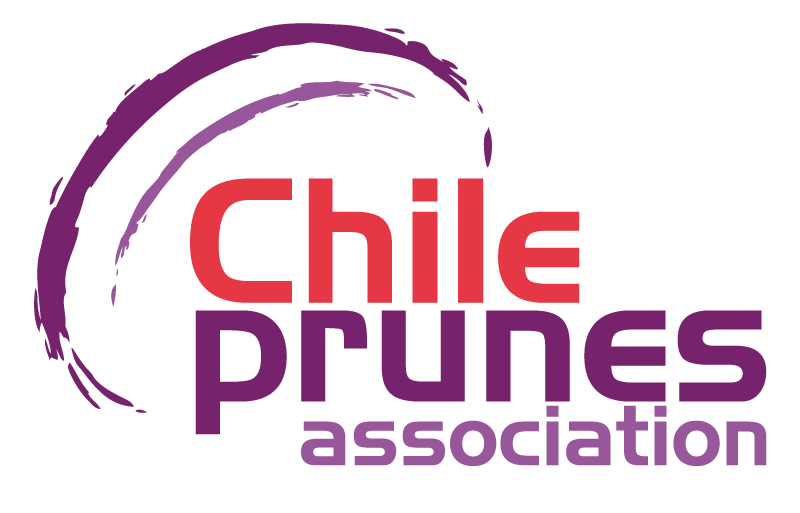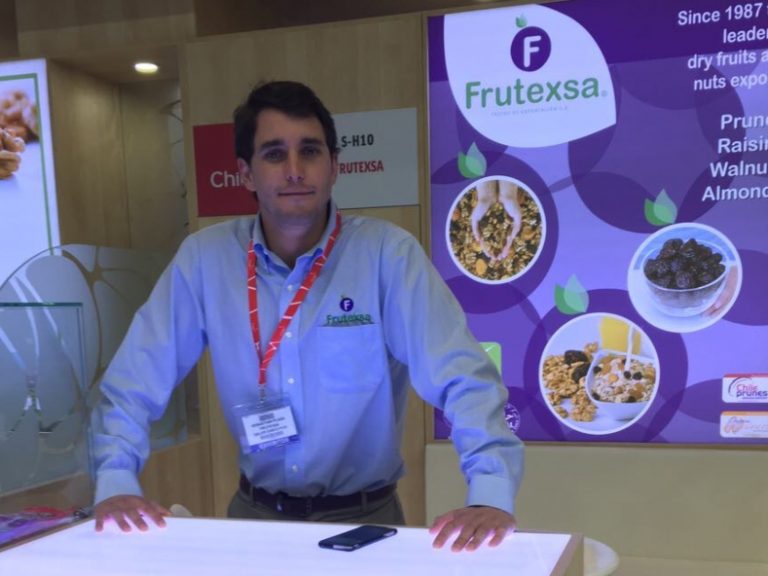Interview with Sebastián Plaza, sales and product manager of Frutexsa, a company belonging to ChilePrunes.
With an office in Vitacura and plants in Buin, Los Andes and Graneros, Frutexsa has more than 500 employees, considering prunes, nut, raisin and almond plants.
As far as dehydrated prunes alone, this company belonging to ChilePrunes, had a production that this season reached 10,000 tons, which involved a decrease of 12 versus 2019. Of its fields, the 90 is exported in dehydrated and the 10 goes fresh, the main destinations being Russia, Mexico, Spain, England, Italy and Poland, in that order.
Apparently, the situation in the fields appears to be relatively controlled in terms of COVID-19, both for Frutexsa and the industry in general. “As farmers we are fortunate to be able to maintain the activity and the people that we have always working with strict health measures and with a minimum risk of contagion,” says Sebastián Plaza, sales and product manager of Frutexsa.
From the first few days, they adopted a battery of measures that includes entry to the facilities through a healing tunnel, temperature control, mandatory use of masks, increased frequency and hand wash control, implementation of signage, redesign of work shifts and lunch to facilitate social distance, as well as informative talks and support for workers. This has allowed them to operate normally and give peace of mind.
So, let’s move on to another topic.
After half the year, what would be your balance for the 2020 season?
Despite the challenges of the pandemic, in the case of prunes we see a fairly similar year or a small decrease in demand compared to previous years. We are still waiting for the second semester, but overall we see a similar development from last year to date.
As for the calibers, given the “boom” of fresh plum, in general producers have prepared the plantations to harvest larger fruit and in recent years we have improved the calibers substantially. This has led to a greater supply of large calibers and shortages in medium and small calibers.
What role does fresh D’Agen prunes play in its production?
Although our focus is on prunes, the fresh export business is interesting as it helps improve return by combining exports with dehydrated.
How have sales been in international markets?
This season the harvest is about 20 less than the 2019 season, with fewer medium calibers and boys, and a higher volume in large calibers. Given this lower offer in medium calibers and boys were sold quickly and we managed to improve the prices that were very depressed from previous years. In large calibers sales have fallen, somewhat, compared to previous years.
Is the relative return to normality in Europe playing any relevant role, thinking about how important Russia, Spain, England, Italy and Poland are to you?
The effects of the pandemic have led to an increase in sales through supermarket channels and a considerable drop in the HORECA channel, having a net effect of the 20 drop in shipments to the date mentioned. However, we expect this new normal to increase the pace of shipments as the market is unsupply. For example, Poland is a very attractive market and we see that the trend of increasing prunes consumption is maintained.
On the other hand, we must be attentive to the crops of Romania, Serbia and Uzbekistan. Although the quality is considerably lower than ours, when prices are very low, it still affects the demand for Chilean prunes.
On the other hand, how has China presented itself?
We have a strong presence in China, mainly because of nuts and raisins. In prunes an interesting market has been developed for semi-processed products. We are constantly monitoring the Chinese market in the search for sales of higher value-added products.
In general, we are very energetic trying to boost Asia as we believe it is the market of the future, but rather than opening new markets, what we seek is to consolidate those we already are in, and try to add greater value to the product either by selling more in retail packaging or by doing programs with customers, who seek to differentiate themselves in some way.
What trend in prunes consumption is being seen in the world?
Overall, the consumption of prunes in the world has remained stable despite the increase in population and food awareness. The new trends relate to more sustainable packaging and new forms of distribution but the collective challenge of our industry is to promote the benefits of prunes and influence to increase consumption.
On the other hand, how has the domestic market presented itself?
It does not represent a relevant percentage of the destination of our product; however, with our partner company Piwen, its retail and supply chain for wholesale distributors, we have managed to bring prunes to their consumers who are mostly people who are very aware of a healthy diet and who seek them for their great nutritional qualities.
We can’t stop talking about the water resource, which fortunately has been more generous in the last two weeks… In general, how are you addressing the issue of water scarcity?
Being very tidy with the maintenance of our irrigation equipment, supply channels and accumulation locks. We are extremely rigorous in the efficient use of the water resource.
We also use technology and tools such as the Sholander pump, weather station and calicatas that allow us to optimize the scarce water resource to the maximum, especially in the most critical moments.
With the latest rains we believe that the areas of higher production, it seems, have assured irrigation for the next season; the deficit is around 20 in the south central area, so everything indicates that there would be no major problems for this season.
Do they have any use strategies, plants and orchards in relation to water use? Water recycling in plants?
In all our plants the 100 water used in the processes is treated and reused in irrigation.
Would you like to close with advances in innovation and sustainability that you are developing at Frutexsa?
Our mission and commitment is to be the leaders of the area through the incorporation of technology and a quality system that allows us to improve continuously. This year has not been the exception and we have many new features:
In innovation, we are working in conjunction with the regional centre for healthy food studies in the development of new prunes products.
In sustainability, we have reached an agreement to supply our plant in Buin with renewable energy in Buin 100.
We have also completed a program of improvements to our IT infrastructure, both physical and software, that departed two years ago. We implement SAP and a software package that today allows us to be very well connected with each other and have information in a very fast way.



